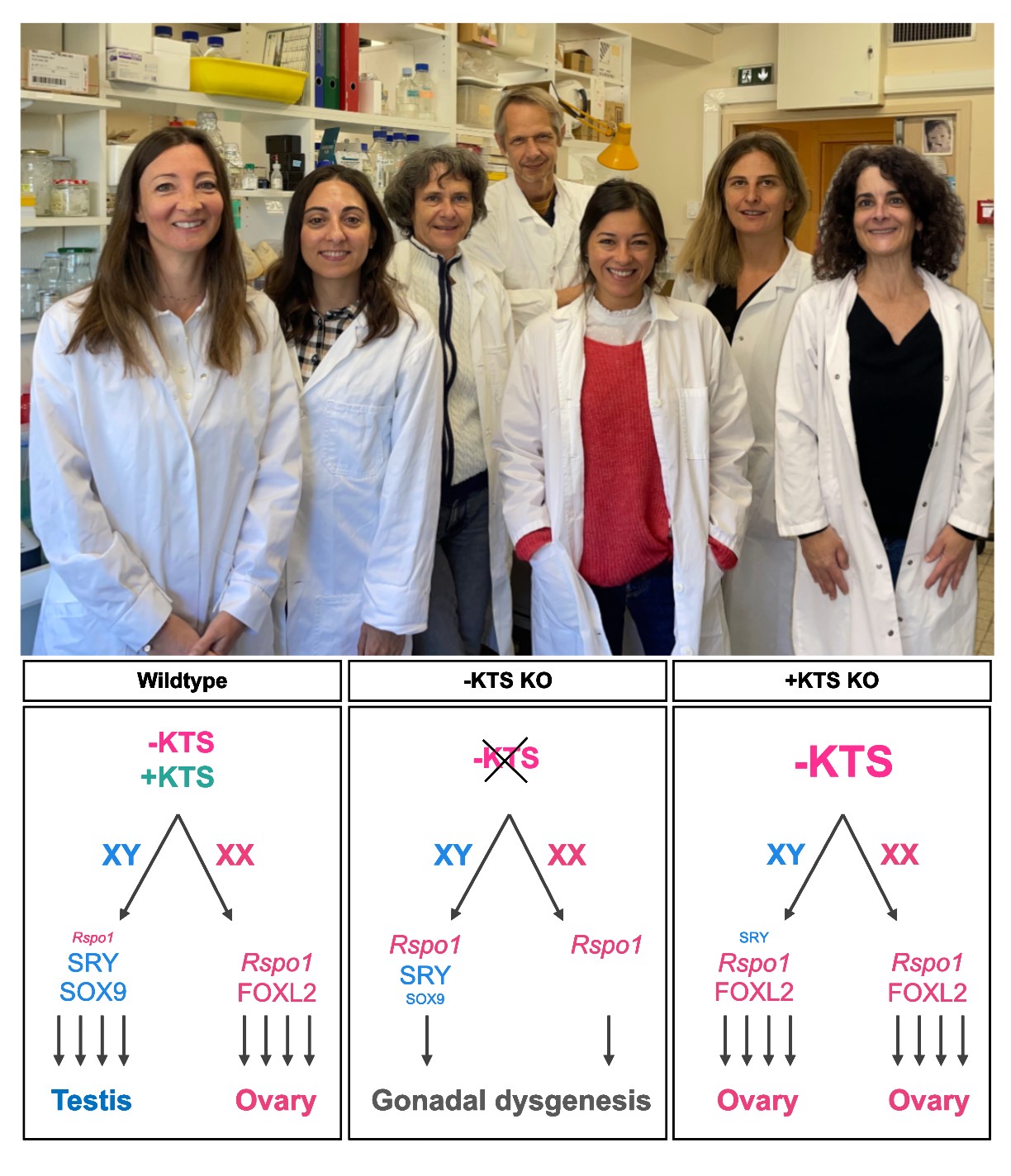https://www.science.org/doi/10.1126/science.add8831
What are the genetic cascades controlling sexual determinism making us men or women? A gene, Wt1, was previously shown to trigger sex reversal, but the specific roles of its splice isoforms (+ and –KTS), identified by the lab of Andreas Schedl, remained an open question for more than twenty years (Hammes et al., Cell. 2001). Opening the WT1 black box has been the task of Elodie Gregoire. For the past 15 years, Elodie has been working as an engineer in the lab of Marie‐Christine Chaboissier, whose aim is to understand the genetic network involved in gonadal development. After years of efforts, Elodie and other teammates finally discovered that the –KTS isoform of WT1 is the ovarian‐determining factor. Thus, in contrast to what had been thought for decades, ovary differentiation is not a mere default consequence of the Sry gene loss in female and a splice variant of WT1 is specifically required for ovarian development during embryonic life.
Elodie explains: “After four years of collaborative work, including one year of revision to answer all the reviewer’s concerns and perform the experiments they suggested, our paper has been accepted at Science. Revision experiments started just before the renovation works at the new functional and pre‐clinical exploration platform, so it was very challenging and stressful as we had to generate a gain‐of‐function model with a closed facility! But thanks to the help of Andreas Schedl and Fariba Jian Metamodi, we managed to start again experiments in the new facility as soon as it opened.”
She remembered her strong feelings when Science announced that the paper was accepted: “I was of course very happy, as was everyone else in the team, when we heard the news and we celebrated together. But I think I was even happier when I saw the results of the analysis of the mutants that we generated with Andreas to answer the concerns of the reviewers. They unequivocally validated our original hypothesis. I literally jumped for joy!” The team now hopes that this ground‐breaking discovery will provide a better understanding of the cascade of genes leading to ovarian formation. It will also help clinicians to better characterize certain abnormalities in gonadal development and to provide more appropriate genetic advice to patients and families.
We have been asking Elodie a few more questions on this experience and achievement. Can you tell us few words about you ?
I’ve been working at the institute for almost 20 years and in Marie‐Christine Chaboissier’s team for 15 years.
What is your professionnal experience and how did you join the lab of Marie‐Christine ?
I worked for one year at the Curie Institute in Orsay before applying to the École Pratique des Hautes Études in Paris in 2004. It was the preparation for this degree (equivalent to a master) that enabled me to work on gonadal development in Andreas Schedl’s laboratory for four years. I then obtained a position in Marie‐Christine Chaboissier’s laboratory as an assistant engineer and completed my thesis in 2015. “I know that I am very lucky to work on my own project in the lab, it’s not so usual for an engineer. There is a real team spirit in the group: when needed, it happens that we all dissect or prepare samples for the same project. We also exchange our ideas very often on the experimental strategies about different projects of the lab. I have also been often in charge of lab student mentoring; I am really grateful for this mark of trust.”
Do you want to add a personal comment ?
“It sounds like a cliché, but it’s been a really good time working together in a collaborative manner on some of experiments of the paper, as there is such a pressure when trying to publish in such a high journal! It’s great to have such a good atmosphere in the lab! On a more personal note, I hope that I’ve passed on to my daughters the importance of being able to do a job that we enjoy and the satisfaction that comes with being rewarded for our efforts.”


